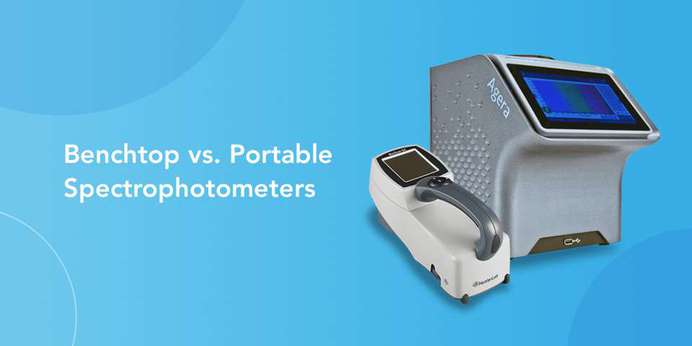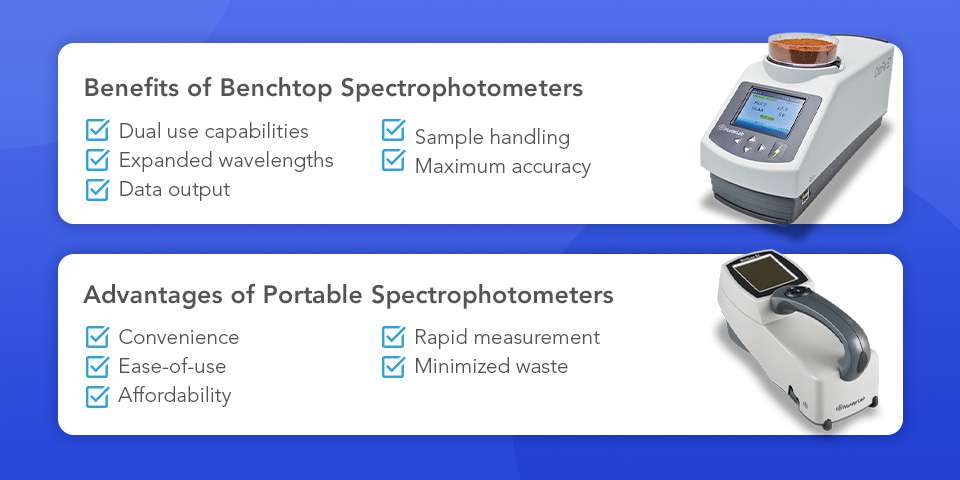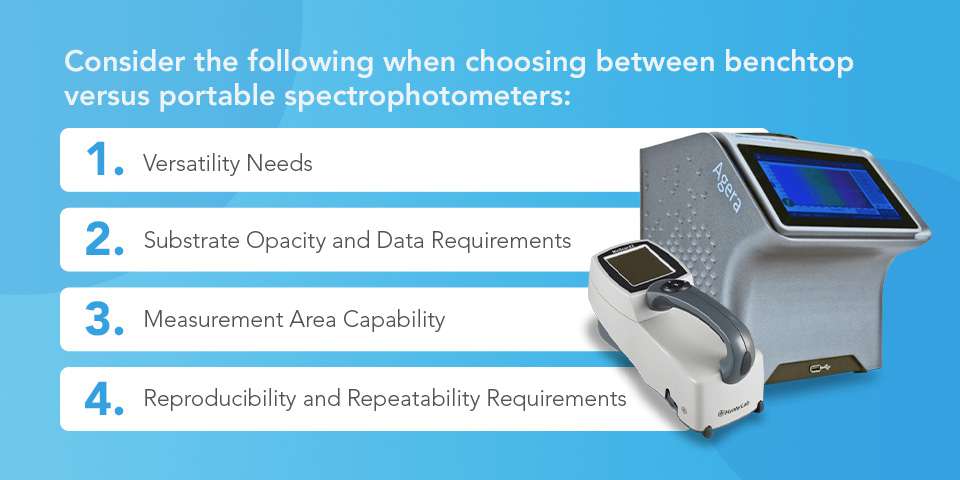
Both benchtop and portable spectrophotometers have vital industrial applications. These devices facilitate manufacturing color-quality testing and many other industrial processes. Depending on your industry and operational needs, you may need to use each device for different field sites. You’ll need to consider whether convenience or repeatability is your top priority for specific applications.
If you’re weighing the benefits of one versus the other, let us walk you through a comparative guide. We’ll explore the advantages, disadvantages, and differences between benchtop and portable spectrophotometers so you can choose the best option for your applications.
Benchtop Spectrophotometers

Benchtop spectrophotometers offer extremely high precision and consistency for stringent quality control measurements. Professionals across many demanding industries rely on these devices to address critical color measurement needs.
Benefits of Benchtop Spectrophotometers
With benchtop spectrophotometers, you can gain many key advantages, including:
- Dual use capabilities: Portable spectrophotometers are designed for reflectance measurements only, while many benchtop models offer both reflectance and transmittance measurement capabilities.
- Expanded wavelengths: Portable spectrophotometers are often limited in wavelength capabilities, measuring in the visible wavelengths with some offering limited UV capabilities. Many benchtop units offer expanded capabilities in the UV, visible, and IR wavelength ranges.
- Data output: Benchtop spectrophotometers offer more sophisticated and modern interconnectivity to LMS, SPC and other data management systems.
- Sample handling: Benchtop spectrophotometers provide a wide range of sample handling solutions to maximize accuracy and repeatability.
- Maximum accuracy: While all spectrophotometers offer exceptional precision, benchtop options typically feature maximum accuracy for applications with very tight color tolerances.
Drawbacks of Benchtop Spectrophotometers
When you’re creating quality standards or trying to ensure consistency across multiple locations, a benchtop device may be best for the job. However, outside of these applications, benchtop spectrophotometers come with disadvantages.
These options lack portability, so you must transport items to the benchtop spectrophotometer’s location instead of carrying a hand-held model throughout the facility. That can result in lost productivity. Additionally, benchtop options are generally more expensive than portable spectrophotometers.



